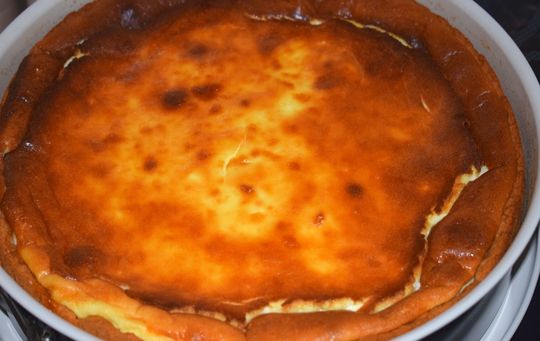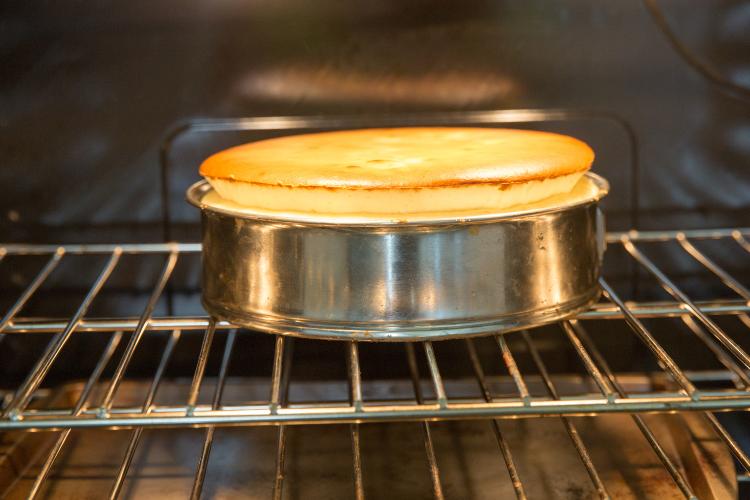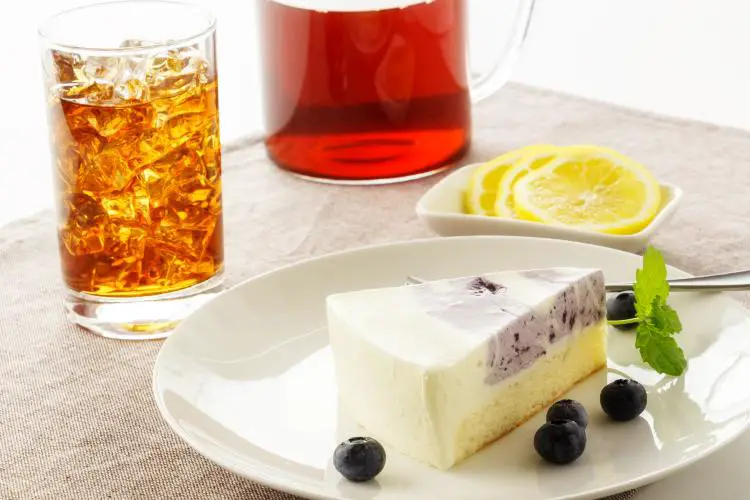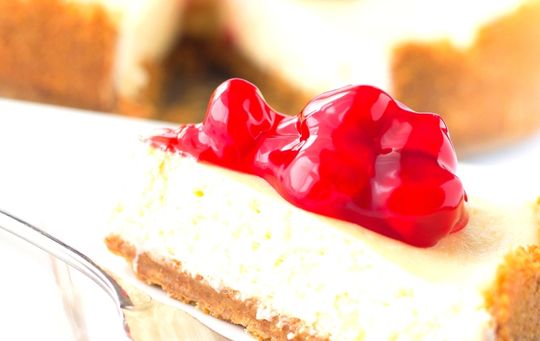Cheesecake is a beloved dessert enjoyed by people all around the world. There are many different variations of cheesecake, but one thing that they all have in common is the method of cooking them in a water bath.
Why Do You Cook Cheesecake in Water? Cooking cheesecake in a water bath, or bain-marie, helps maintain a consistent and gentle temperature during baking, preventing the edges from overcooking and the center from cracking. The water bath also adds humidity to the oven, creating a moist environment that contributes to the smooth and creamy texture of the cheesecake.

Why do you cook cheesecake in water – Explained
Cheesecake bakes more uniformly and preserves its silky texture when prepared in a water bath, sometimes referred to as a bain-marie.
The cheesecake is less likely to crack or dry out in the oven because to the water bath’s soothing, wet atmosphere.
Also, it aids in maintaining the cheesecake’s temperature, which is crucial for cheesecakes that are thicker or denser and require a longer baking time.
Overall, employing a water bath is a straightforward method that can significantly alter the texture and appearance of homemade cheesecake.
What is a water bath?
A water bath, also known as a bain-marie, is a cooking method in which a container of food is placed in a larger container of water.
The water bath helps to evenly distribute heat around the food, which is especially important when cooking delicate items like cheesecake.
The water bath can be set up in a number of ways, such as placing a cake pan inside a larger roasting pan, or using a special cheesecake pan with a removable bottom and a built-in water bath.
Why is a water bath necessary for cheesecake?
Why do you cook cheesecake in water? There are a few reasons why a water bath is necessary for cheesecake.
The first is to regulate the temperature of the cheesecake as it bakes. Cheesecake is made with eggs, which can curdle or scramble if they are subjected to too much heat.
By cooking the cheesecake in a water bath, the heat is more evenly distributed, helping to prevent the eggs from overcooking.
The second reason is to help prevent the cheesecake from cracking. Cheesecake is a dense and creamy dessert, and as it bakes, the surface can contract and pull away from the sides of the pan, resulting in cracks.
The moisture from the water bath helps to keep the cheesecake moist and prevents it from drying out, which can lead to cracking.

How does a water bath affect the texture of cheesecake?
The water bath plays a significant role in the final texture of the cheesecake. As mentioned, the moisture from the water bath helps to keep the cheesecake moist and prevents it from drying out, resulting in a creamy and smooth texture.
The water bath also helps to create a more even texture throughout the cheesecake, as the heat is more evenly distributed.
Additionally, the water bath can help to prevent the cheesecake from overbaking, which can result in a dry and crumbly texture.
By regulating the temperature of the cheesecake as it bakes, the water bath helps to ensure that the cheesecake is baked to perfection.
Tips for using a water bath:
There are a few tips to keep in mind when using a water bath to bake your cheesecake.
First, it is important to wrap the bottom and sides of the cheesecake pan in aluminum foil to prevent water from seeping into the pan.
This will help to keep the cheesecake from becoming waterlogged.
Next, be sure to use hot water when filling the larger container for the water bath.
This will help to ensure that the cheesecake bakes evenly and prevents the temperature from dropping too much as the cheesecake bakes.
Finally, it is important to keep an eye on the water level in the larger container as the cheesecake bakes.
The water should come about halfway up the sides of the cheesecake pan. If the water level drops too much, the cheesecake may not cook evenly.

Conclusion
In conclusion, the use of a water bath is an essential step in the process of baking a perfect cheesecake.
The water bath helps to regulate the temperature of the cheesecake, prevents it from drying out and cracking, and creates a creamy and smooth texture.
By following a few simple tips, you can master the art of using a water bath to bake a delicious and flawless cheesecake every time.
Whether you are a seasoned baker or just starting out, incorporating a water bath into your cheesecake-making process is sure to yield impressive results.
So next time you’re ready to whip up a batch of cheesecake, don’t forget to grab that roasting pan and fill it with water – your taste buds (and your guests) will thank you.
People Also Ask
Do All Cheesecakes Have to Be Baked in a Water Bath?
Not all cheesecakes require a water bath, but it’s recommended for custard-style cheesecakes to prevent cracking and ensure a smooth texture.
What Is the Advantage to Cooking a Custard or Cheesecake in a Hot Water Bath?
Cooking custard or cheesecake in a hot water bath provides gentle, even heat, reducing the risk of overcooking and helping maintain a creamy, crack-free texture.
Should I Put Water in the Oven When Baking a Cake?
You typically don’t need to put water in the oven when baking most cakes, but it can be beneficial when baking custard-based cakes like cheesecakes.
Is a Water Bath Necessary for Cheesecake?
A water bath isn’t always necessary for cheesecake, but it’s advisable for custard-style cheesecakes to achieve the best results.
How to Keep Cheesecake from Cracking?
To prevent cheesecake from cracking, use a water bath, avoid overmixing, and let it cool gradually by turning off the oven and cracking the door open before removing it.
Frequently Asked Questions
How to prevent cheesecake from cracking?
To prevent cheesecake from cracking, you can use several techniques such as baking in a water bath, avoiding overmixing, not overbaking, and cooling it gradually by turning off the oven and cracking the oven door.
Why water bath cheesecake?
Using a water bath, or bain-marie, when baking cheesecake helps maintain a gentle, even temperature around the cheesecake, reducing the likelihood of cracks and ensuring a creamy, smooth texture in the finished product.






